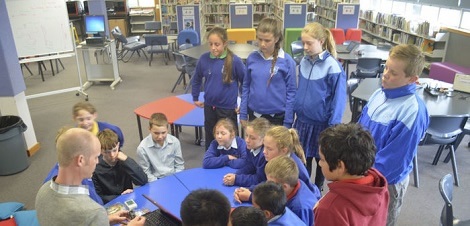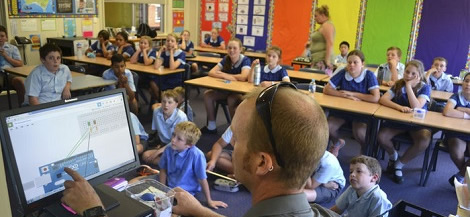The Canobolas Rural Technology
High School
The Canobolas Rural Technology High School (CRTHS) is
located in the town of Orange in western New South Wales. Situated in a rural area, CRTHS focuses on using technology
in a rural context that provides real meaning to students.
Arduinos in the classroom
There are many ways in which Arduinos can add value and
engagement to the classroom. At CRTHS we used Arduinos as a vehicle to introduce the idea of integrated Science, Technology
Engineering and Mathematics (STEM) projects to students from our feeder primary
schools as part of a coordinated transition program. Apart from
injecting excitement in to the study of these subjects it provided
students with the opportunity to develop 21st century skills such
as creativity and collaboration that would assist their transition into
high school.

First steps
Getting started with Arduinos in the classroom takes some time
but the rewards are worth the effort. One of the best parts about working with "maker" technologies is that you can be a co-learner
with your students right from the time you open the box. I recommend
both you and your students make use of the support material available from the T4L team to make getting started with Arduinos easy.
Linking it to the curriculum
The flexibility of Arduinos mean they are the perfect vehicle for an integrated STEM project, providing the basis for a student driven solution to a Problem-Based Learning unit spanning the curriculum. In our rural context, there is also great scope for these technologies to be used within the Science and Agriculture classroom. Using an Arduino as the driver of a Smart Farm is something that is currently on our radar.

